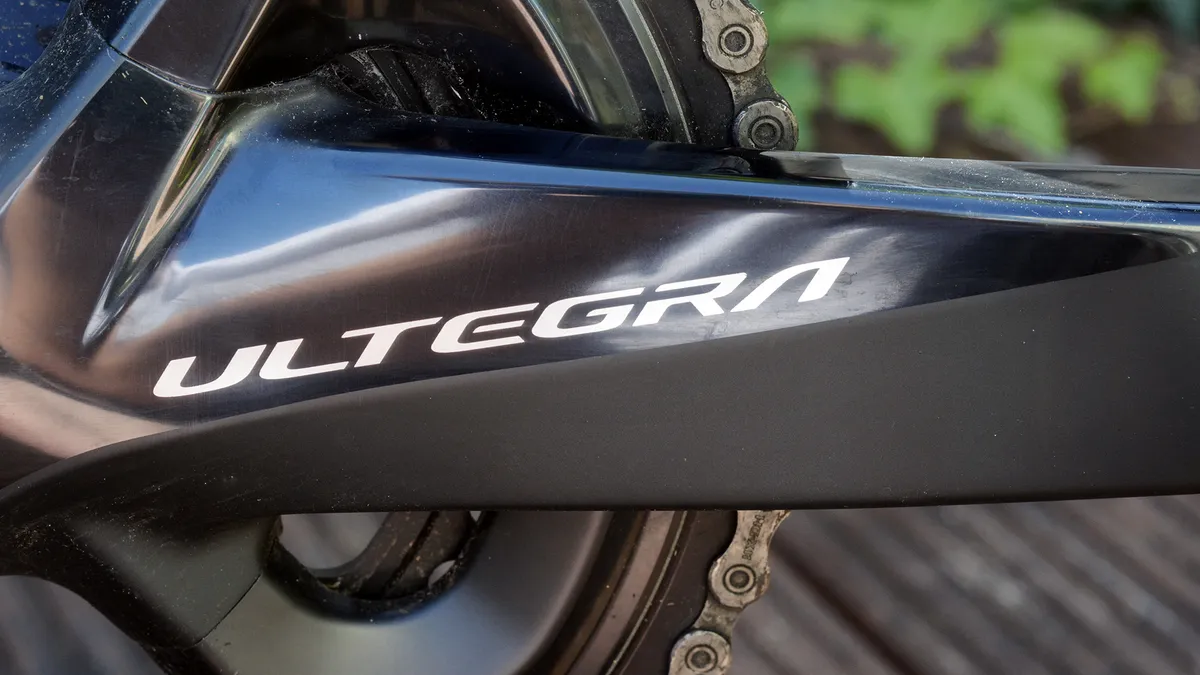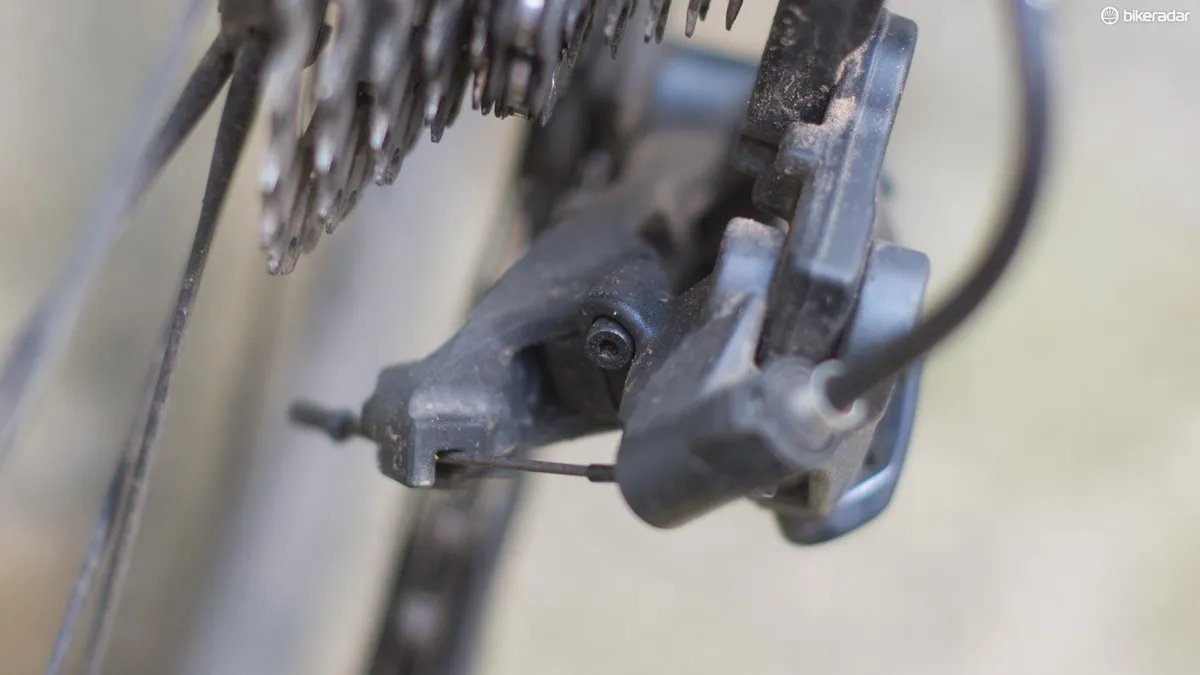The new Ultegra R8000 groupset was announced to much fanfare earlier this year and I’ve finally had the chance to put it through its paces over the last month or so.
- Shimano Ultegra Di2 R8050/R8070 hydraulic groupset long-term review
- Shimano Ultegra R8000 and Ultegra Di2 R8070: all you need to know
- Shimano Dura-Ace Di2 R9170 first ride review
To be clear, I’m reviewing the R8000 version of the groupset here (mechanical shifting, rim brakes, 2,095g claimed weight). As a handy reference, this is what each of the four new versions of Ultegra R8000 look like;
- R8000: mechanical shifting / mechanical rim brakes
- R8020: mechanical shifting / hydraulic disc brakes
- R8050: Di2 electronic shifting / mechanical rim brakes
- R8070: Di2 electronic shifting / hydraulic disc brakes
We’ll be sure to review the other versions of the groupset as we get more test bikes in, but for the time being, this review should be a useful reference for those interested in seeing how the shared components (e.g. derailleurs, crankset) stack up.
With this in mind, and as many of you may be looking to upgrade individual parts, this review deals with each of the new components in isolation, with my verdict on the groupset as a whole at the end of this review.
I’ve ridden Ultegra R8000 for close to 400 miles in a huge variety of conditions since receiving the groupset, which is more than enough to give an overall impression. This is of course not enough time to make any assessments regarding the longevity of the groupset and I’ll update this article once I’ve had time to really put it through the wringer.
We were lucky enough to secure an exclusive first look at Shimano's new Ultegra groupset — Matthew Allen talks us through his first impressions of it all while giving it a thorough fondle
Ultegra RD-R8000 rear derailleur
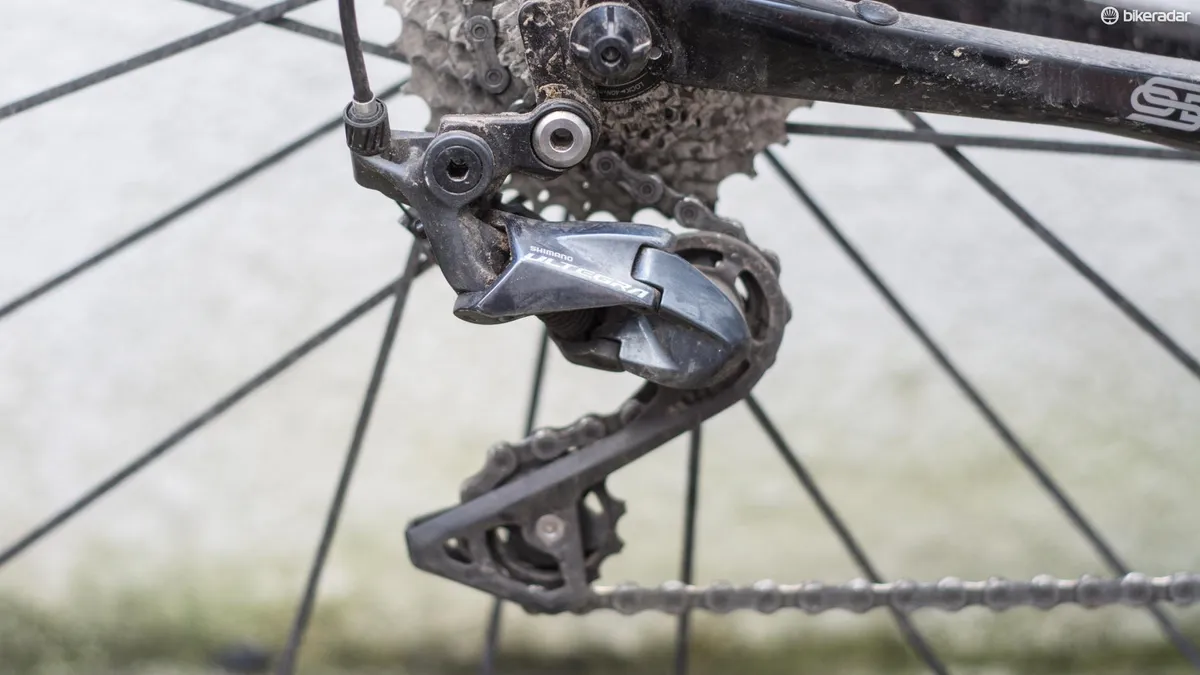
Since it’s what everyone looks at first on a bike (don’t pretend you don’t), we’ll start with the rear derailleur.
I’ve been testing the short cage version of the derailleur here (RD-R8000SS), but the performance is unlikely to be drastically different, if at all, to the long cage version.
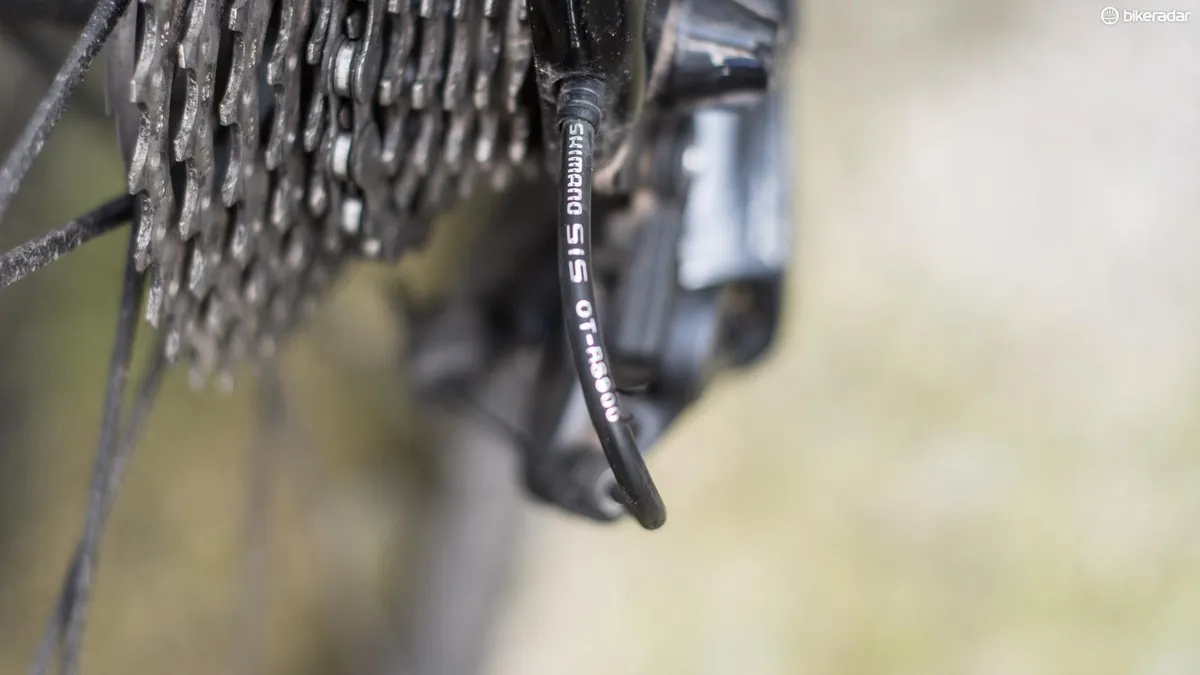
The bike was also fitted with an 11-30 cassette and was cabled with proper, as-the-Shimano-gods-intended-it, OT-RS900 cable.
Most notably, the Ultegra RD-R8000 derailleur has adopted Shimano’s ‘Shadow Geometry’ technology that has been used on its mountain bike groupsets for years now.
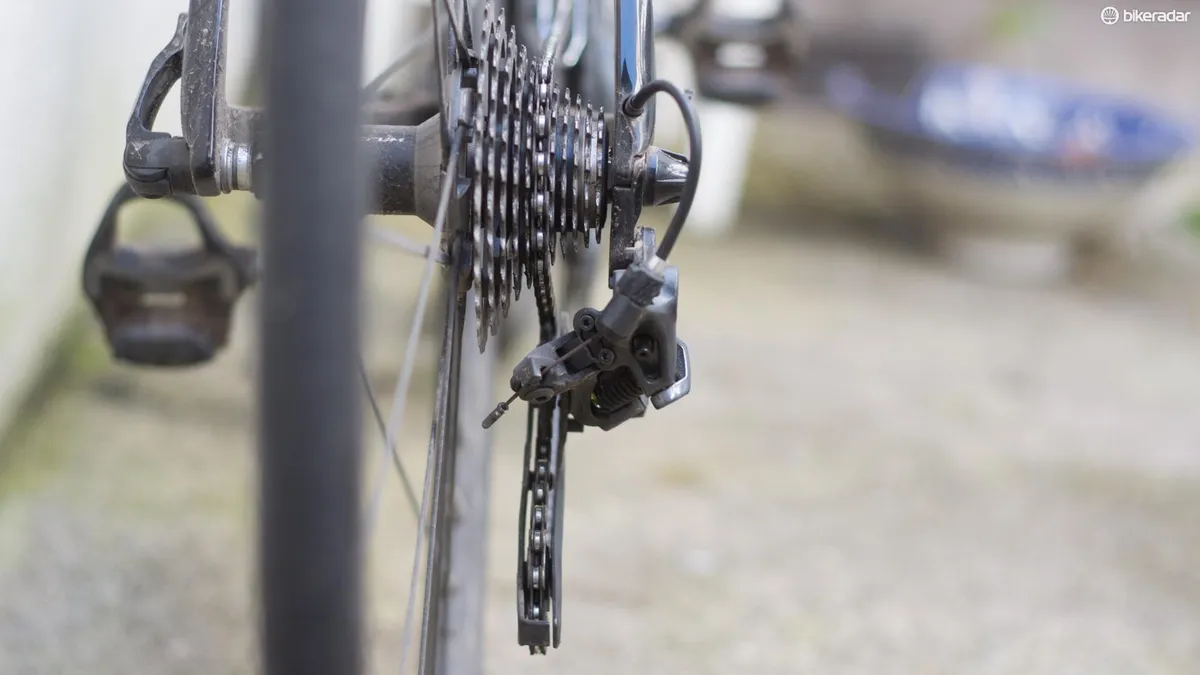
Shadow Geometry shifts the majority of the derailleur mechanism below the cassette and chainstay, keeping it out of harm’s way, leaving only the main pivot proud of the frame.
Few are likely to damage a derailleur by catching or bashing it off something while riding on the road, but given that the new Ultegra groupset will inevitably see time used for cyclocross and gravel, this is a welcome move.
Tucking the mech well under the chainstays should in theory also make the new setup more aero-friendly, and as we all know, #aeroiseverything.
Overall, shifting on the new derailleur feels improved rather than drastically different — the feel at the lever is slightly lighter and overall more satisfying, with an absolutely delightful metallic ‘cla-chunk’ as the chain climbs the cassette.
Shifting speed feels much the same as the previous generation, but this was hardly laggy, so no complaints here.
Thoroughly wiggling it in a workstand, the tension of the cage pivot feels a little bit stronger than the previous generation, which should help to keep things quiet on rougher terrain.
However, much to my chagrin there’s still no sign of a clutch equipped — or Shadow Plus as Shimano calls it — rear derailleur that is directly compatible with Shimano’s road shifters. 1x for the road without resorting to Di2 or cable pull adaptors would be great, so can we please have this soon, Shimano?
The move to the Shadow style geometry means that the mech is now compatible with ‘direct mount’ (DRD) derailleur hangers. This arrangement is said to stiffen up the connection between the derailleur and the frame, improving shifting accuracy.
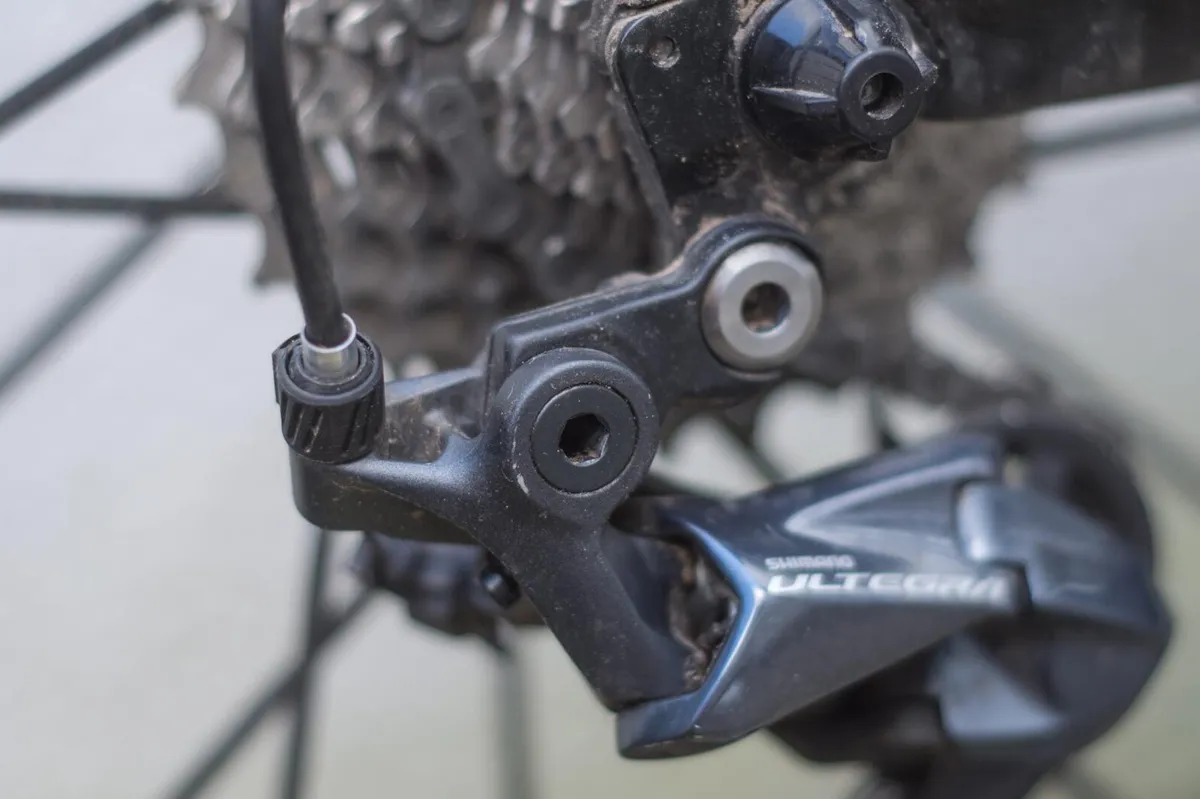
A handful of mountain bikes use this system, but as far as I’m aware, no road bikes have employed it as yet.
Shimano has been gradually shifting to using hex heads over crosshead screws for its limit adjusters and R8000 is no exception. While this makes things a bit more multi-tool friendly — some screwdrivers didn’t play nice with the JIS heads used on Shimano’s derailleurs — just remember that it’s not exactly difficult to round small hex heads, so make sure you use decent hex keys and keep things clean, and you shouldn’t have any problems.
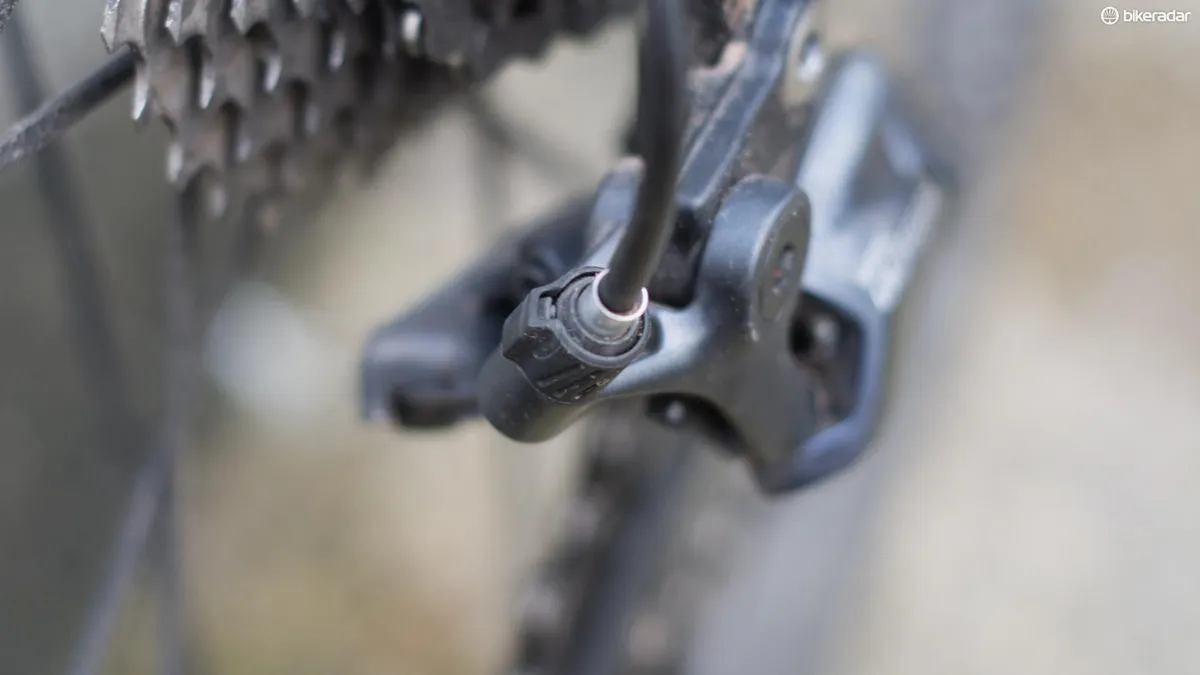
I’m not particularly fond of the new barrel adjuster design — it’s lost the chunky ‘wings’ of the old adjuster in lieu of a more compact one that has one little lip and some grooves to grip onto.
You can still get a reasonably good hold on this, but I can foresee it being a little more tricky to shift should anything become seized or stiff.
Ultegra ST-R8000 levers
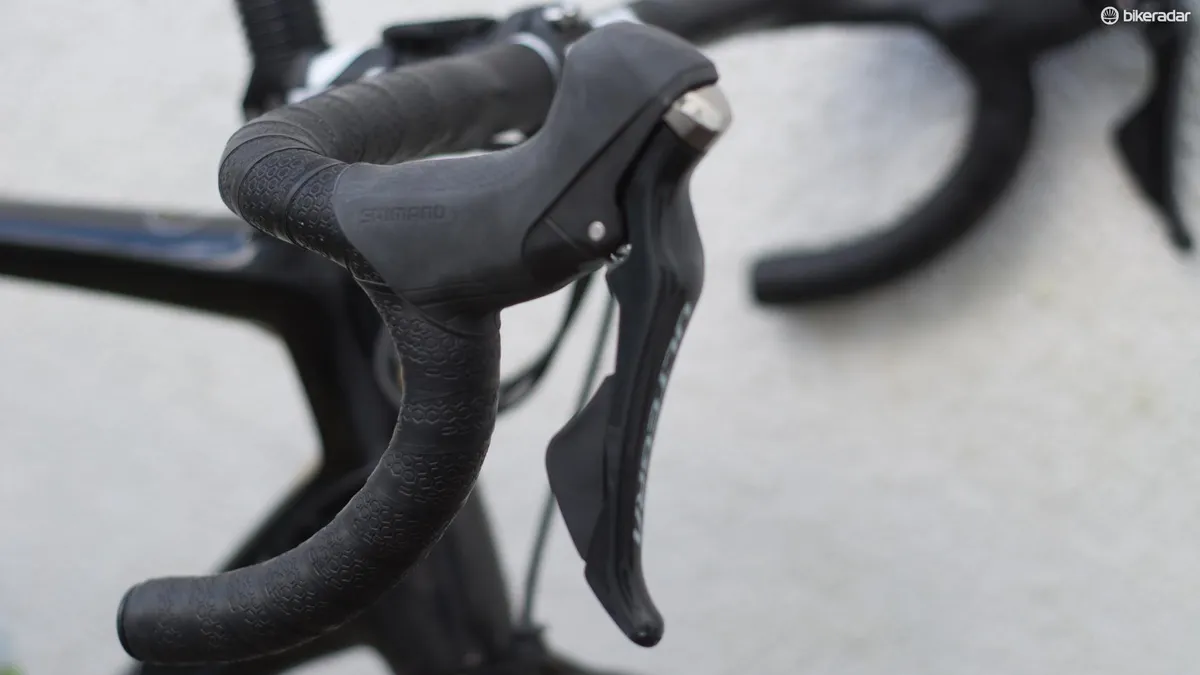
The new Ultegra ST-R8000 levers are almost identical in profile to the new Dura-Ace 9100 levers, with a slightly more boxy shape than 6800 and a new textured hood surface.
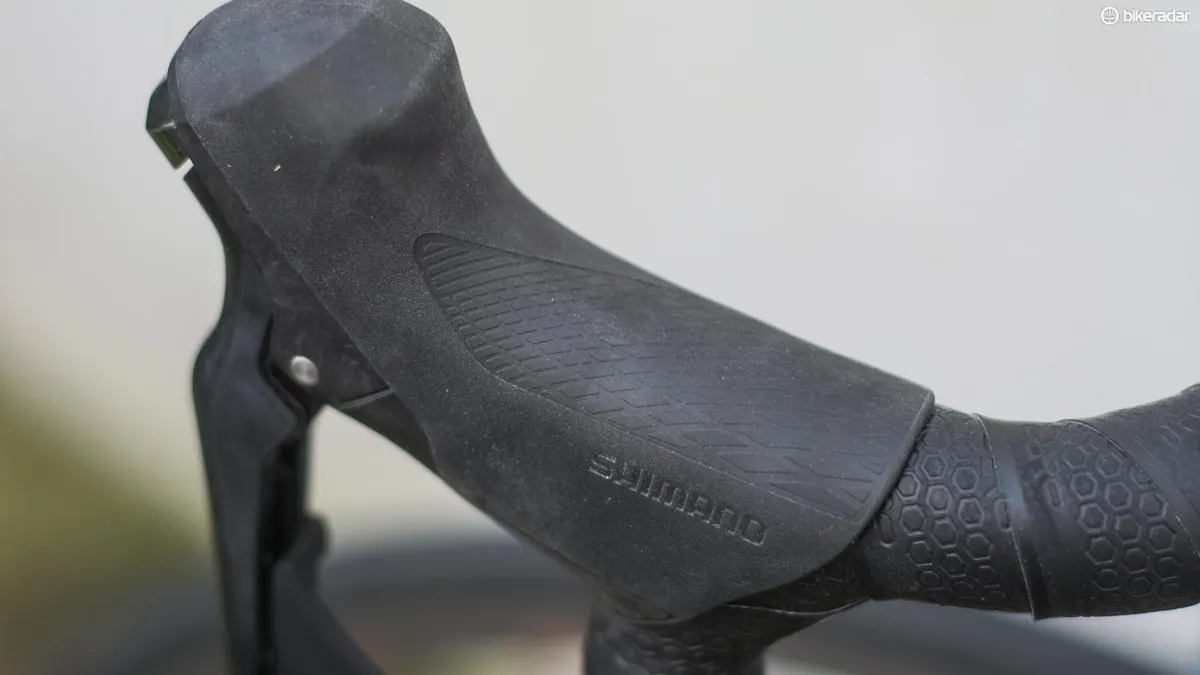
Of course such assessments are purely personal, but I prefer this new shape over the very slightly more rounded old profile — the flat upper surface sits nicely in your palm and seems to transition a bit more smoothly from the bars to the hoods.
The lightly textured hood surface is also a nice touch and didn’t cause any hot spots or chafing, even when riding without gloves.
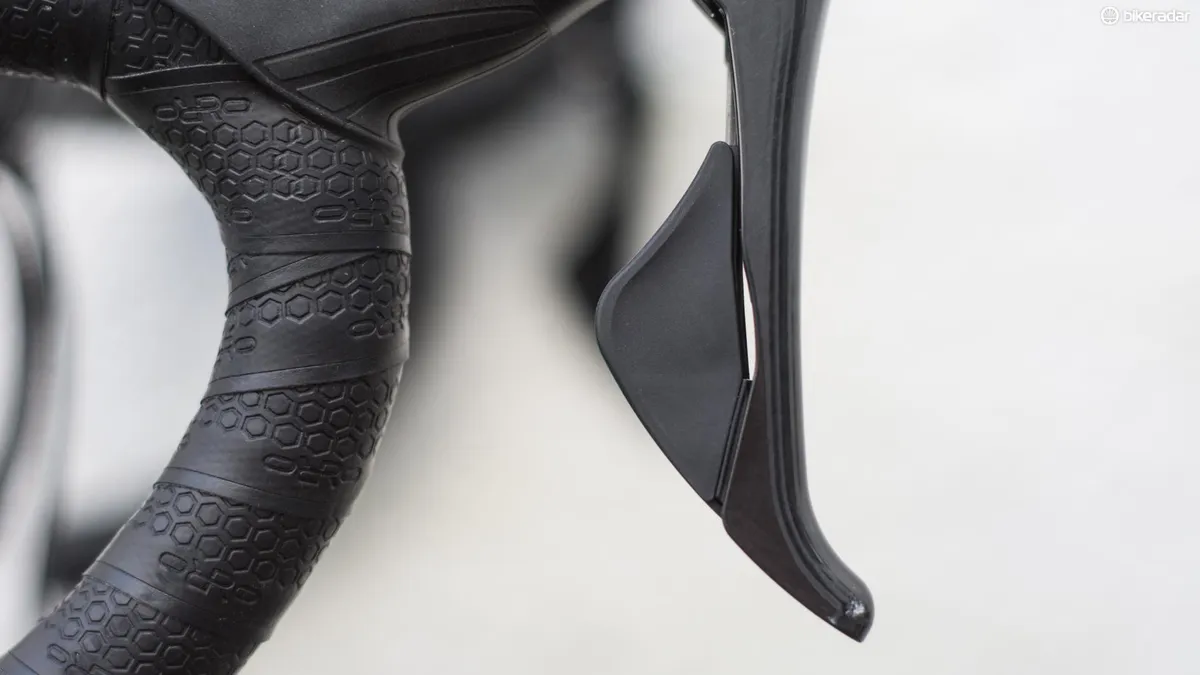
As with Dura-Ace 9100, the shape of the shift paddles has been revised to make them more defined, particular with gloves. With the new design, I’ve found it slightly easier to reach out and find the paddles when riding in the drops.
The throw required to drop a gear has been reduced on both sides, with the throw required to shift up the cassette also reduced.
I suspect this will be a very welcome move for those with smaller hands. For my larger phalanges, this resulted in a pleasingly light feel at the lever.
You could argue that this makes it slightly easier to inadvertently hit the paddle and drop a gear, but I didn’t find this to be the case.
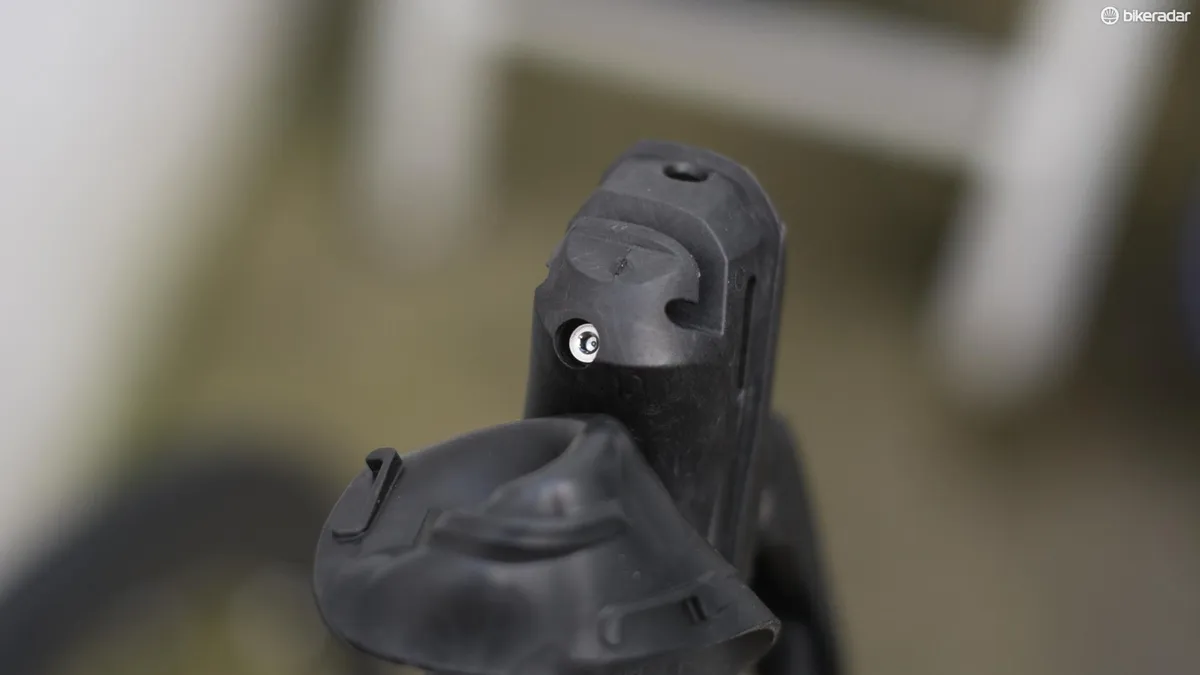
Reach adjustment is as easy as before — though a 2mm hex key is now used instead of a flat blade screwdriver to make adjustments — and does appear to have a slightly greater range of adjustment than the previous generation. Thank goodness we’ve moved away from using those stupid little spacer blocks of old.
Ultegra BR-R8000 dual-pivot brakes
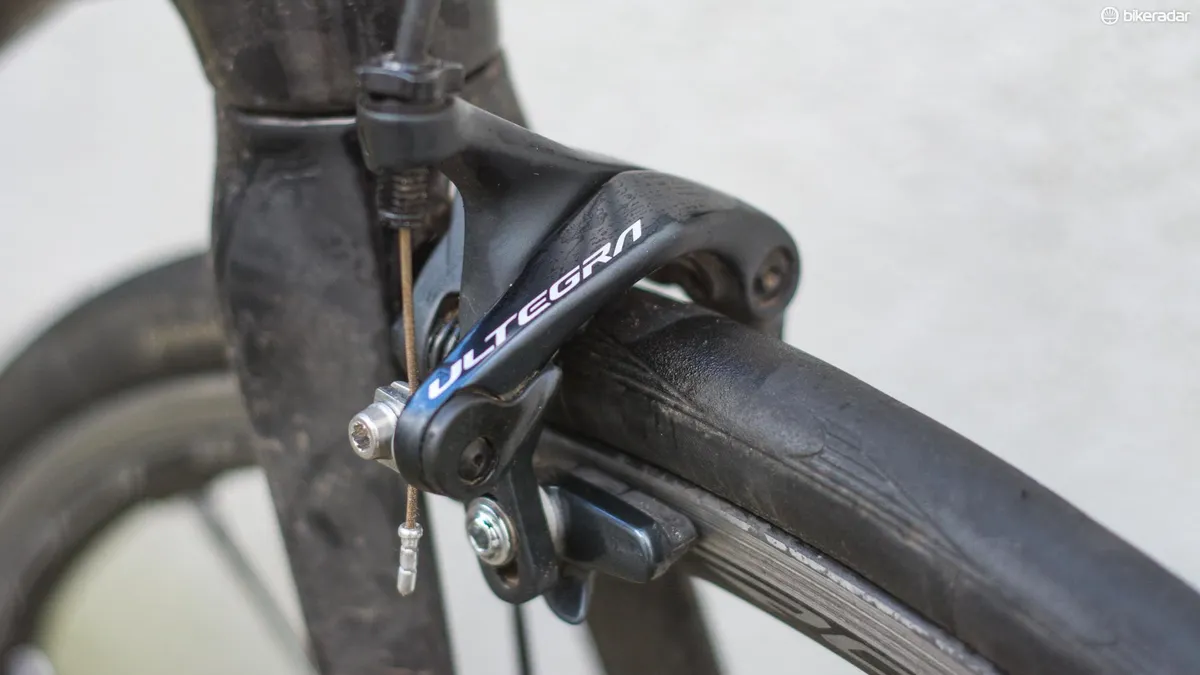
The new Ultegra brakes look almost identical to the new Dura-Ace 9100 brakes, with the same angular aesthetic and slightly pointed front end (for the aeros, of course), but they feature a slightly different finish, matching the rest of the Ultegra groupset’s two-tone finish.
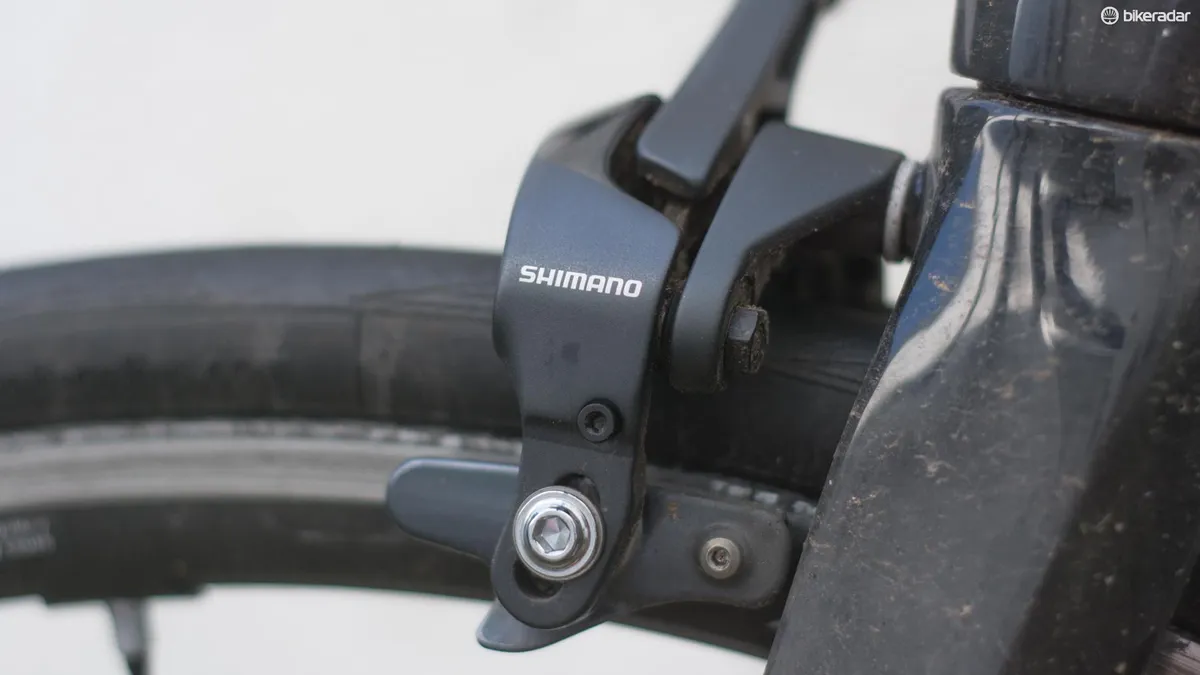
The brakes have been beefed up overall, with the backing plate and both arms all getting a touch chunkier.
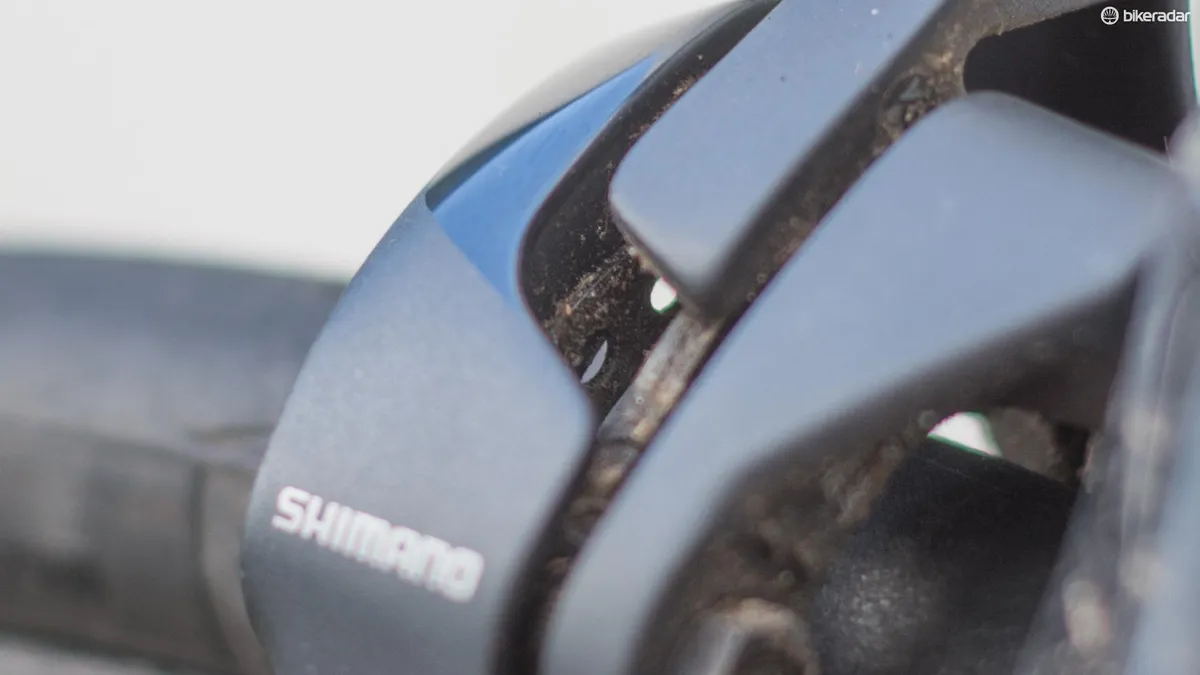
The new brakes also include the same ‘booster’ bar that was introduced with the new 9100-series brakes. This thin metal plate sits between each of the brake arms, bridging the gap between the pivots and is said to “reduce deformation and improve braking efficiency."
Shimano has made no specific claims as to how much stiffer the new R8000 brakes are over the outgoing 6800-series model, but the latest Dura-Ace brakes are reported to be 43 percent stiffer than the previous generation, so we can likely expect similar claims here.
Shimano’s efforts seem to have paid off, with the power of the new Ultegra R8000 brakes up there with the very best and a marked improvement over Ultegra 6800, which was hardly lacking in oomph.
Modulation has also drastically improved.
Setup obviously plays a big role in braking performance, but I think there’s some truth in Shimano’s claim that it has “modified the braking curve to be more linear” in a bid to make braking more predictable — during a hard stop, there’s a pleasing level of ‘squidge’ at the lever, allowing you to really control the amount of power and avoid locking up the wheel.
For those that can remember that far back, it almost feels as though there’s one of those old SM-PM70 modulators fitted inline, except there’s no sacrifice in power here.
Unlike the rear derailleur, the barrel adjuster on the new brakes remains unchanged, with big, easy to grab wings making for easy on-bike adjustments.
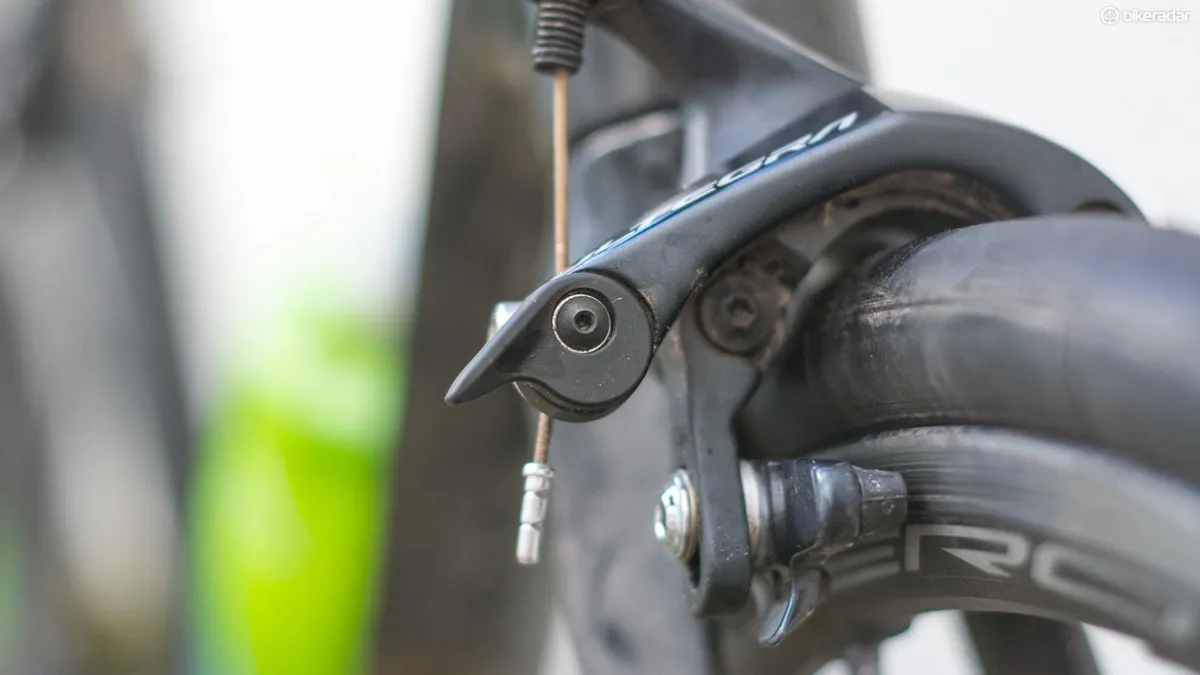
Some will bemoan the change to the design of the quick releases used on the new R8000/R9100 brakes (you can count Contador among your number) as it is now simply a two-position affair, making wheel changes or opening the brakes up to prevent brake rub on a climb a bit more of a faff.
However, for those that don’t have a team car loaded up with spare wheels following them, you’ll probably read about this change here and then never think about it again.
If I had to pick out one truly significant improvement introduced with Ultegra R8000, it’s got to be the rim brakes.
Ultegra FD-R8000 mechanical front derailleur
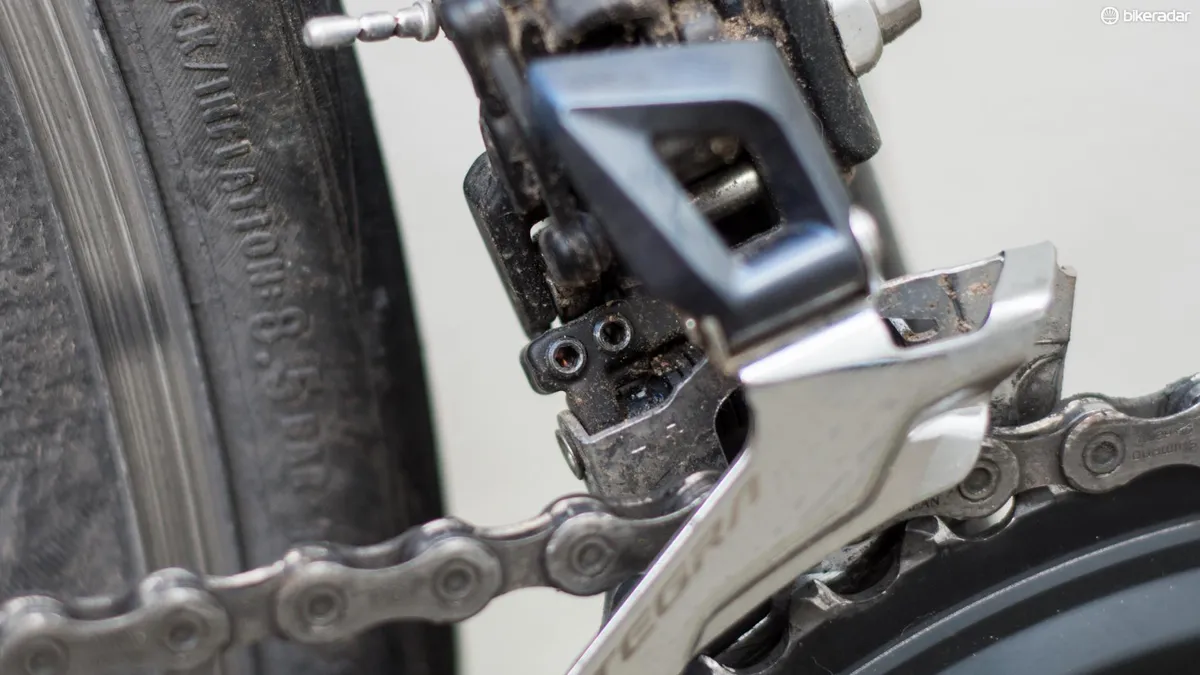
While I may have picked out the updated brakes as my key improvement in the Ultegra R8000 groupset, Shimano is particularly proud of its new FD-R8000 front derailleur.
Shimano claims that it has used all sorts of funky engineering wizardry to help match the “force curve” of the hand more naturally, reducing shift effort towards the end of the stroke of the lever.
Shifting does indeed feel light, but I honestly can’t say that it feels that much different from the previous generation of Ultegra.
What is impressive is that this new design manages to retain this light feel while doing away with the super long actuation arm that was used on the 6800 generation of Ultegra. Along with shrinking the overall dimensions of the derailleur cage, removing this arm means that clearances have been improved on bikes that have a short rear-centre or that use particularly wide tyres.
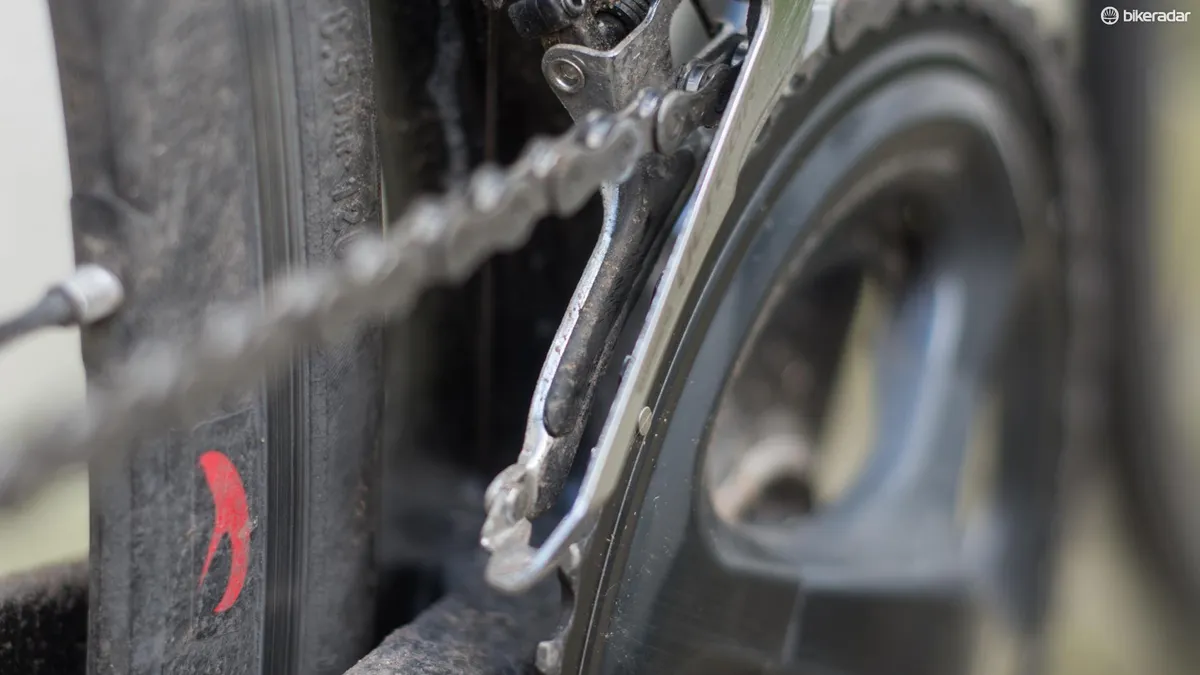
If you like to throw caution to the wind and cross-chain like it ain’t no thang, you’ll be pleased to hear that the little soft plastic patch on the inside of the inner plate is still there — so mashers, keep on mashing, Shimano’s got your back.
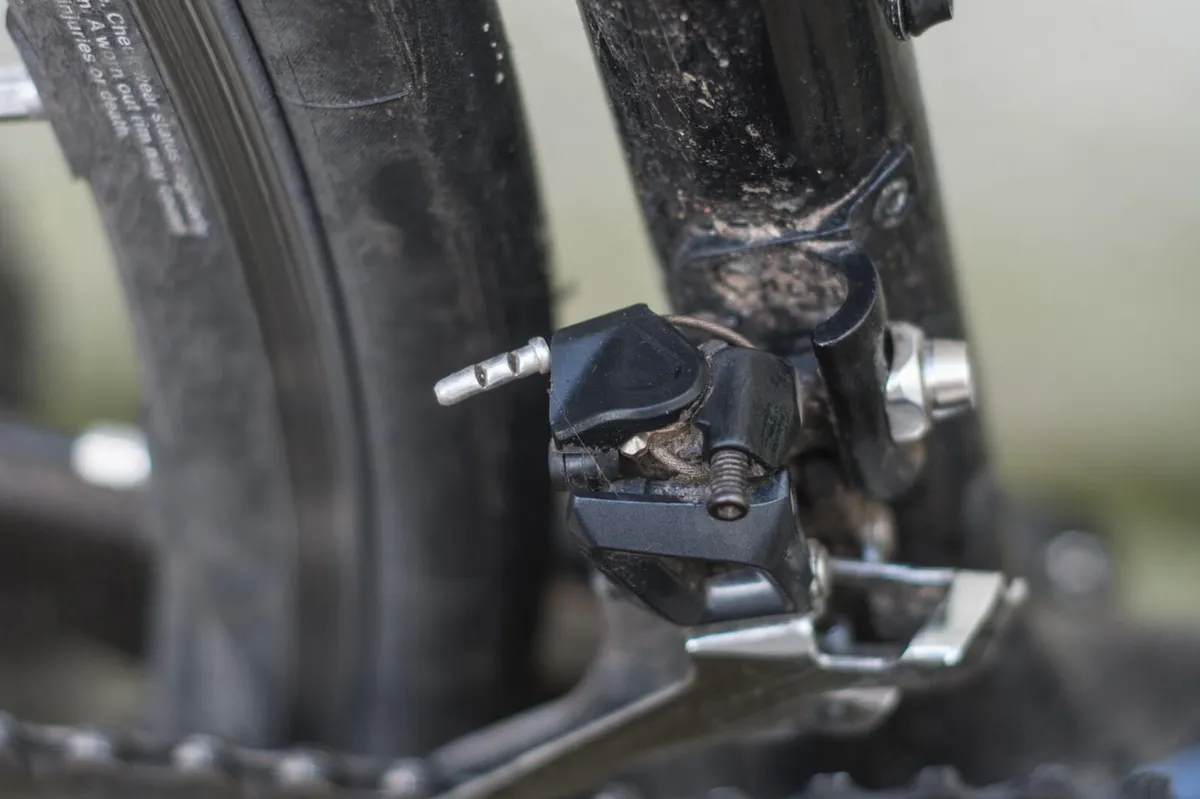
The new inbuilt cable tension adjustment is also very welcome, with a single turn all it took to take up any slack that developed in the cables during the test period. You could of course still use inline adjusters if you want on the fly adjustment, but convenience be damned as they sure do look ugly.
I’m thankful that I didn’t have to put my test bike together when it arrived as that cable routing looks like a bit of a faff, as with everything, I’m sure I’ll get used to it in time.
Ultegra FC-R8000 Hollowtech II crankset
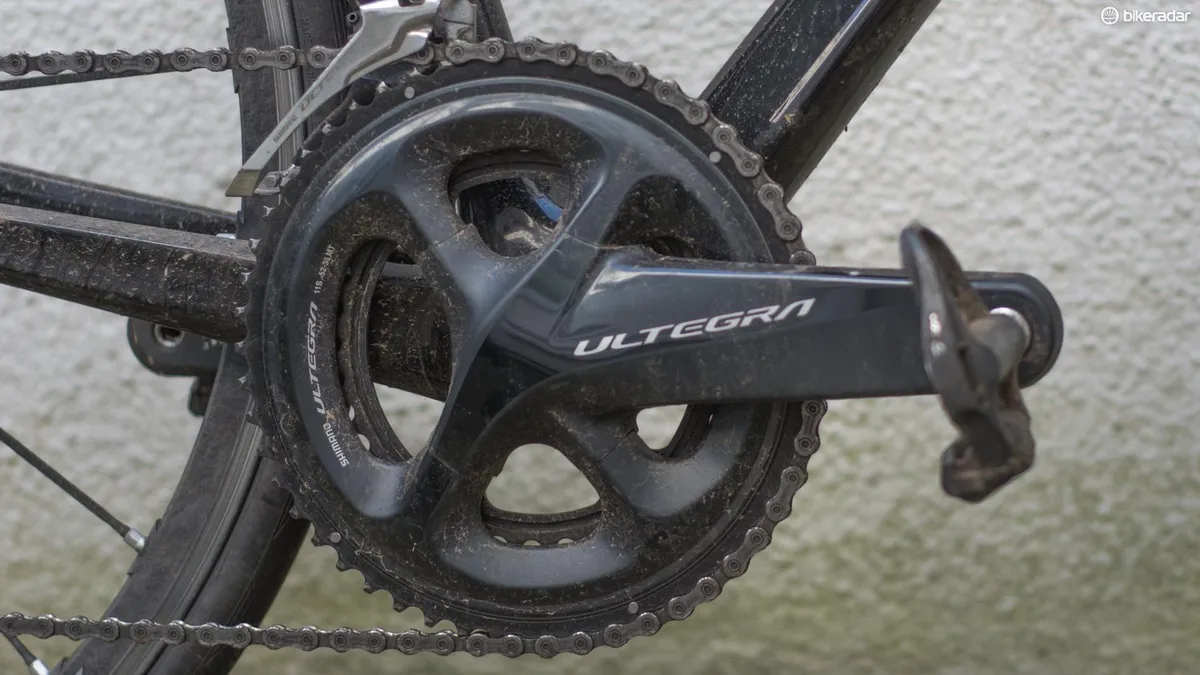
Like the brakes, Shimano’s new Ultegra R8000 crankset is very similar in appearance to its Dura-Ace 9100 series counterpart, with the same updated chunky crank arms and four-bolt pattern chainring carried over from the previous generation. Unlike Dura-Ace, there is no integrated powermeter version of the R8000 crankset available.
Shimano has also “redesigned the chainring tooth profiling” for Ultegra R8000, which sees an “increase in clearance between chain and leading teeth.” This is said to improve performance of the drivetrain on bikes with a sub-optimal chainline and on disc brake equipped bikes.
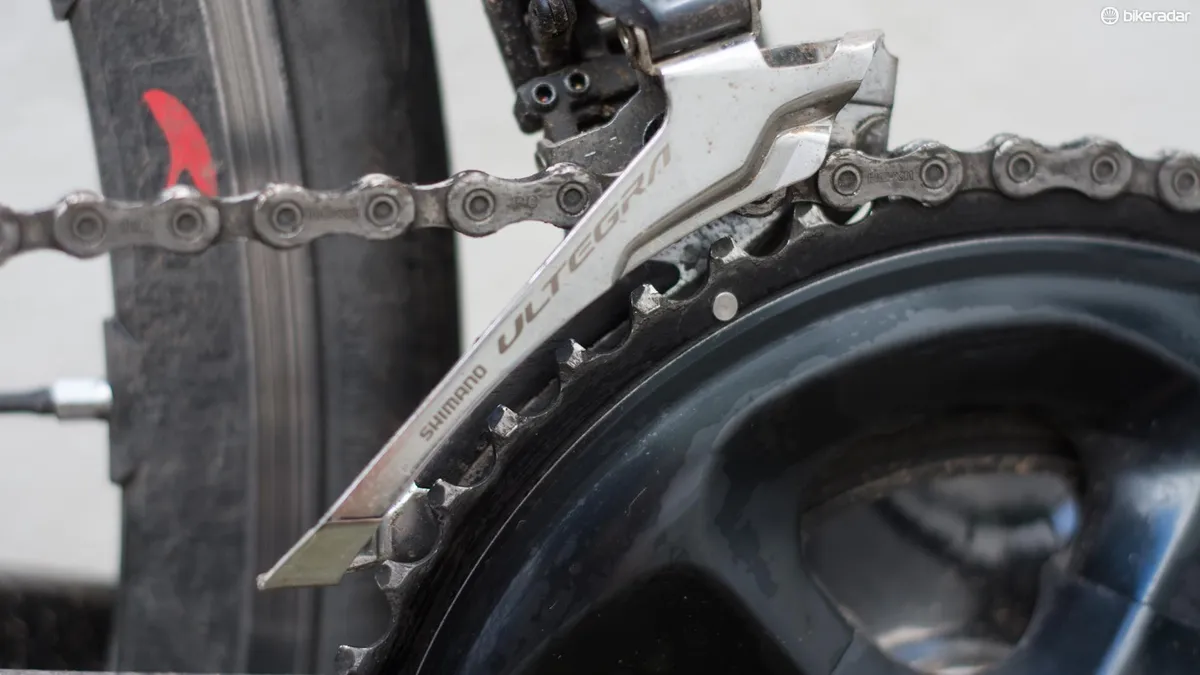
Sacrificing my street cred in the good name of bicycle journalism, I cross-chained my way up many a climb during the test period and the groupset handled this shocking behaviour without complaint. The redesigned front derailleur and crank does seem to be a touch quieter than the previous generation, but it’s certainly not silent when used at these extremes.
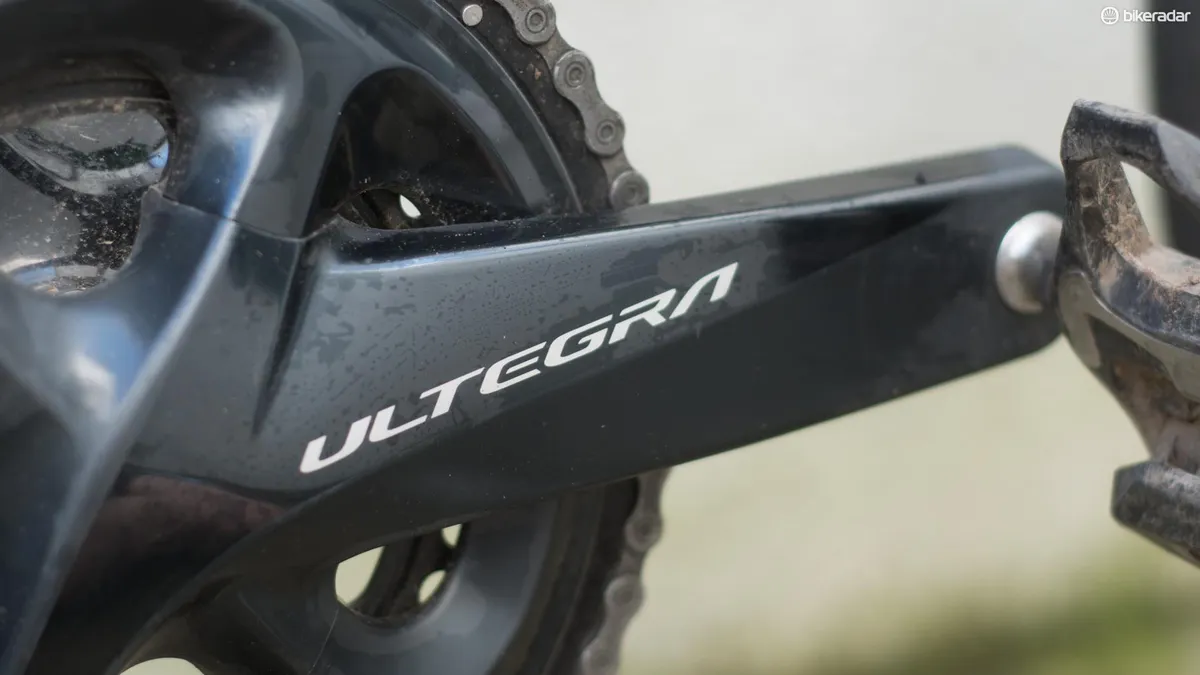
My middling power has always struggled to elicit any flex from Shimano’s supremely stiff Hollowtech cranks, but I’m sure heavier and more powerful riders will appreciate the redesigned, stiffer crank arms.
Shimano SM-CN900-11 quick link and Ultegra CS-R8000 cassette
Shimano’s new Ultegra R8000 cassette supposedly offers “HIGH-PERFORMANCE GEAR COMBINATIONS” and is virtually indistinguishable from the previous generation. It shifts just fine and weighs the same as the old one.
Similarly, Shimano’s new 11spd quick link held my chain together throughout the test period.
And that is all I have to say on the matter.
Ultegra R8000 verdict
Ultegra R8000 is best seen as an overall refresh of the venerable Ultegra 6800 groupset rather than a drastically new design — lots of small refinements make the groupset an absolute joy to use with braking and shifting that is largely indistinguishable in performance from Dura-Ace 9100.
Since I started testing the new groupset, many have also asked me whether it is as good as Dura-Ace 9000 and I’d have to say, yes, pretty much.
9000-series braking was considered benchmark and I think Ultegra R8000 exceeds it in terms of power and modulation. Shifting is also on par, and while R8000 weighs a touch more, you can easily lose that weight elsewhere on the bike.
Compared to the newest Dura-Ace 9100 groupset in the same configuration (mechanical shifting/rim brakes) you gain 260g — again, an amount easily lost elsewhere on the bike — and save approximately £775 / $1,000 / AU$1,280 / €855 on RRP.
Given its performance and that my only real criticism was levelled at a lowly barrel adjuster, I have to say this is a five-star effort from Shimano.
Ultegra R8000 groupset deals
Not unsurprisingly, deals on the new Ultegra groupset have begun to pop up already, with Chain Reaction Cycles appearing to be the cheapest so far.
It should also come as no surprise that Ultegra 6800 — which is of course still a great groupset — is now available for truly bargain basement prices, coming in at 44 percent off currently, again at Chain Reaction Cycles.
